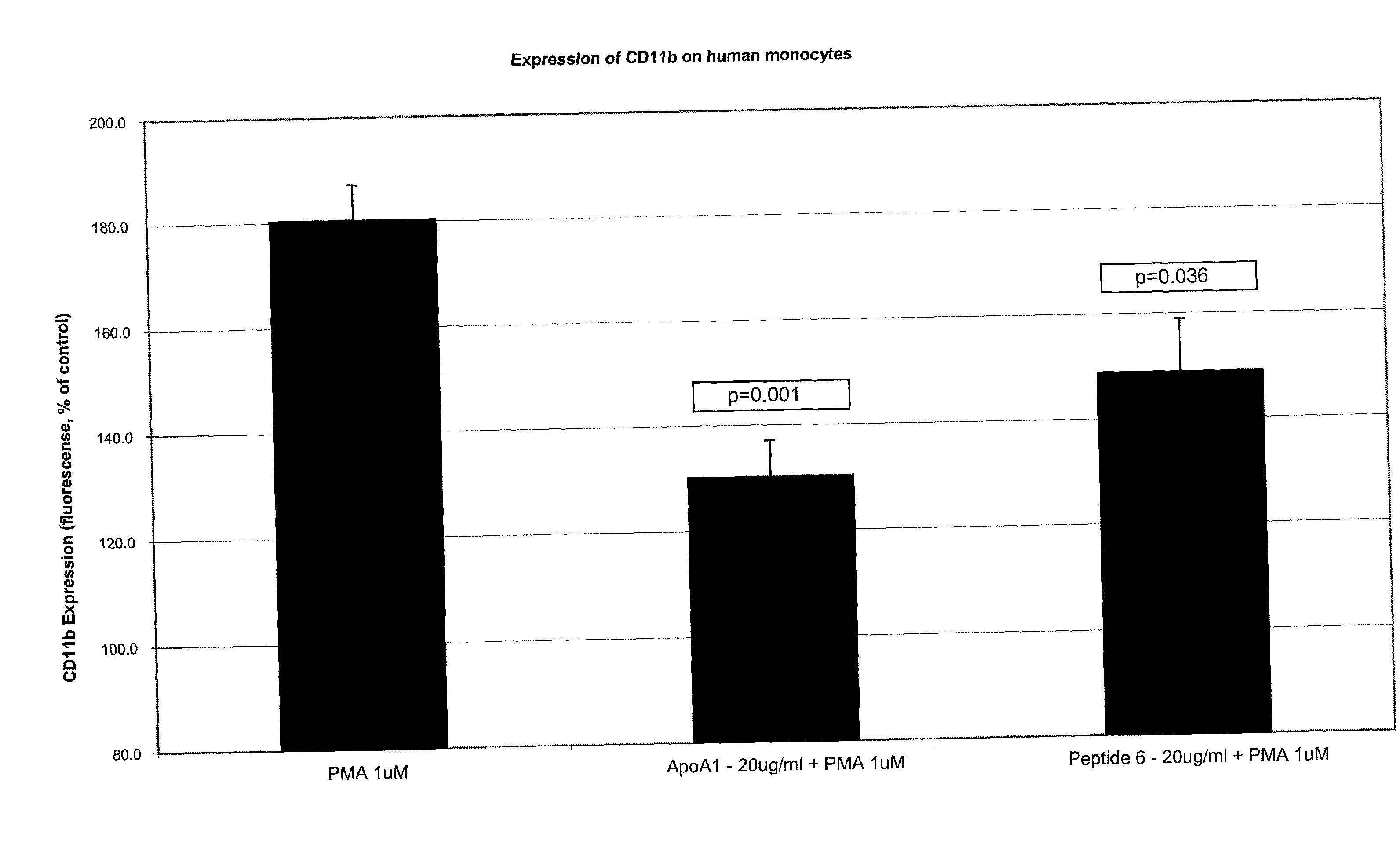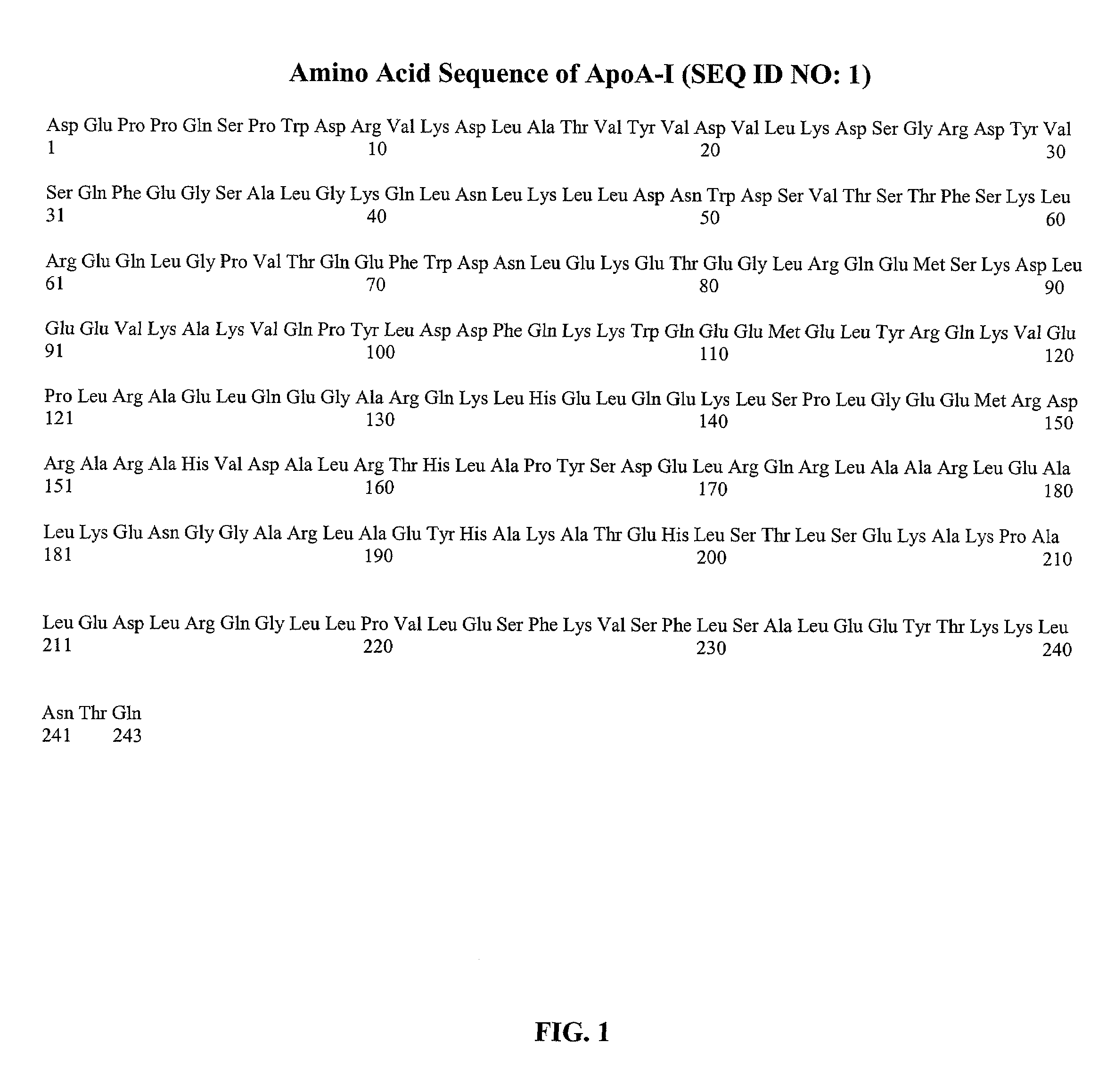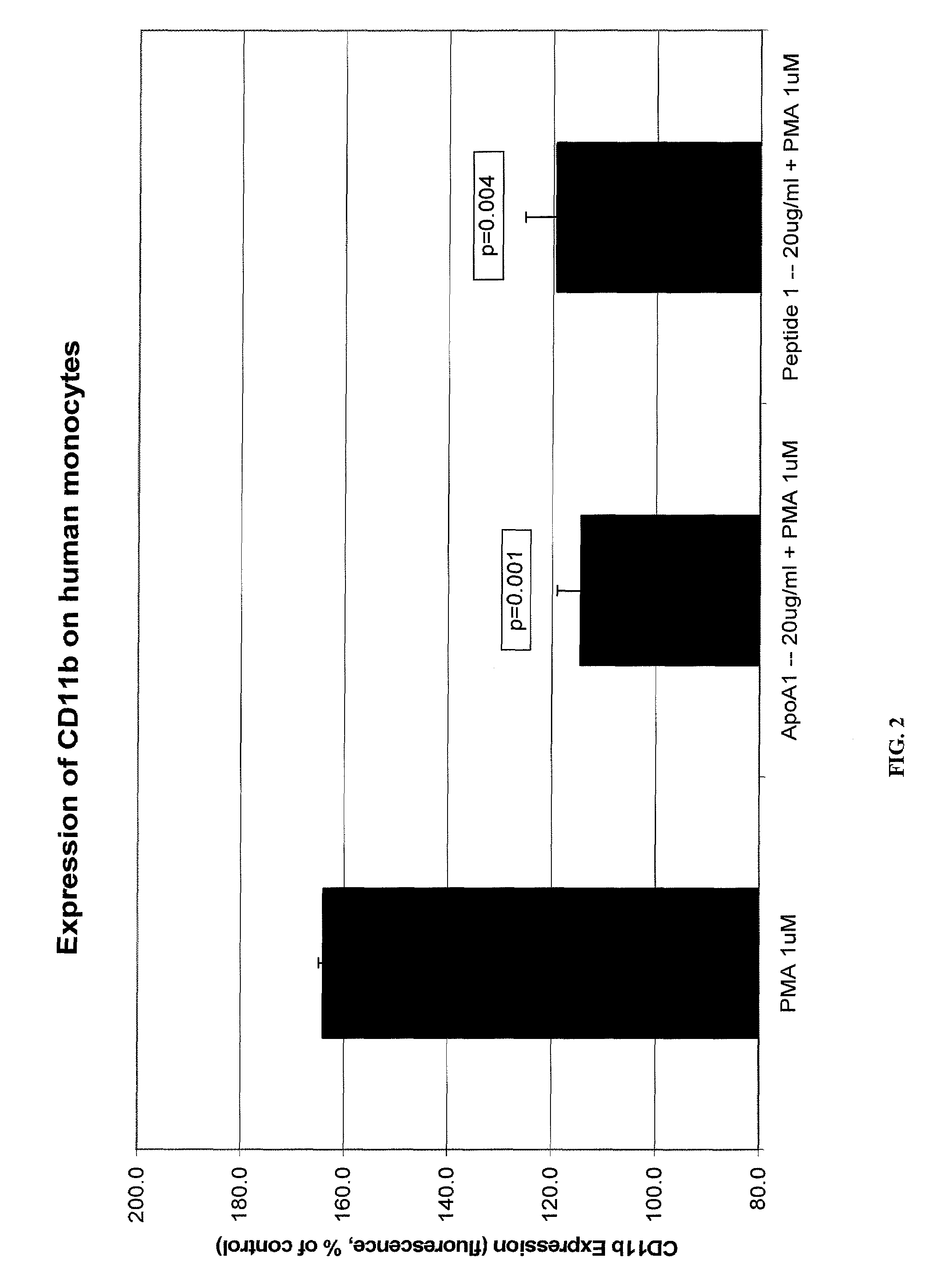Novel Peptides That Promote Lipid Efflux
a technology of lipid efflux and peptides, which is applied in the field of peptides or peptide analogs, can solve the problems that the nature of the interaction between apoa-i and abca1 is not fully understood, and achieve the effects of stimulating lcat activity, facilitating lipid efflux, and facilitating lipid efflux
- Summary
- Abstract
- Description
- Claims
- Application Information
AI Technical Summary
Benefits of technology
Problems solved by technology
Method used
Image
Examples
example 1
Lipid Efflux From Cells Mediated by Peptides of the Present Invention
[0295]This example demonstrates a method to test the ability of peptides of the present invention to efflux lipid from ABCA1-expressing cells.
[0296]HeLa cells stably transfected with human ABCA1 cDNA (ABCA1 cells) and HeLa cells transfected with only a hygromycin-resistant control plasmid (control cells) are produced and grown in α-modified Eagle's medium (aMEM) plus 10% fetal calf serum, as described by Remaley et al. (Biochem. Biophys. Res. Commun. 280:818-823, 2001). Cholesterol and phospholipid efflux is performed for 18 hours on noncholesterol-loaded cells radiolabeled with either cholesterol or choline (Remaley et al., Arterioscler. Thromb. Vasc. Biol. 17:1813-1821, 1997). Percentage efflux is calculated after subtracting the radioactive counts in the blank media (aMEM plus 1 mg / ml of BSA), and expressed as the percent of total radioactive counts removed from the cells during the efflux period.
[0297]Cell fixa...
example 4
Peptides of the Present Invention Reduce Atherosclerosis in Animal Models
[0307]The ability of the peptides of the present invention and associated fragments are tested in apoe knockout mice on a chow diet and LDL receptor knockout mice on a western high fat diet to determine the effect of these peptides to reduce atherosclerosis in a mouse model system. One or more of the peptides of the present invention, in a range of concentration of 2 mg / kg to 50 mg / kg, is injected intravenously (iv) or intraperitoneally (ip) 2 to 3 times per week over a period of approximately 6 weeks. In one study, peptides of SEQ ID NO: 142 and / or SEQ ID NO: 602 are tested. Aortic atherosclerosis is quantitated in the aortic arch before administration of the peptides and after the 6 week period of administration. (Wu et al., J. Biol. Chem.; 2004: 279, 22913-22925). The results demonstrate reduced atherosclerosis in the aortic arch in mice in both treatment groups.
example 5
Administration of the Peptides of the Present Invention to Treat Atherosclerosis in Humans
[0308]Individuals with acute coronary syndrome and documented atherosclerosis have a cardiac catherization with intravascular ultrasound (IVUS) to document coronary atherosclerosis of 20 to 50% obstruction in the target artery. Each individual is on stable hypolipidemic drug therapy and receives an acceptable dose of a peptide of the present invention and / or an associated fragment iv weekly for a period of 5 to 8 weeks. In one study, peptides of SEQ ID NO: 142 and / or SEQ ID NO: 602 are tested. A repeat IVUS measurement is made at the end of the treatment period to assess the effect of the peptide infusion on coronary atherosclerosis in the target vessel. Plaque is reduced in the atherosclerotic coronary artery following the peptide treatment demonstrating efficacy of the peptides of the present invention to treat atherosclerosis.
PUM
| Property | Measurement | Unit |
|---|---|---|
| width | aaaaa | aaaaa |
| pharmaceutical composition | aaaaa | aaaaa |
| lipid deposition | aaaaa | aaaaa |
Abstract
Description
Claims
Application Information
 Login to View More
Login to View More - R&D
- Intellectual Property
- Life Sciences
- Materials
- Tech Scout
- Unparalleled Data Quality
- Higher Quality Content
- 60% Fewer Hallucinations
Browse by: Latest US Patents, China's latest patents, Technical Efficacy Thesaurus, Application Domain, Technology Topic, Popular Technical Reports.
© 2025 PatSnap. All rights reserved.Legal|Privacy policy|Modern Slavery Act Transparency Statement|Sitemap|About US| Contact US: help@patsnap.com



